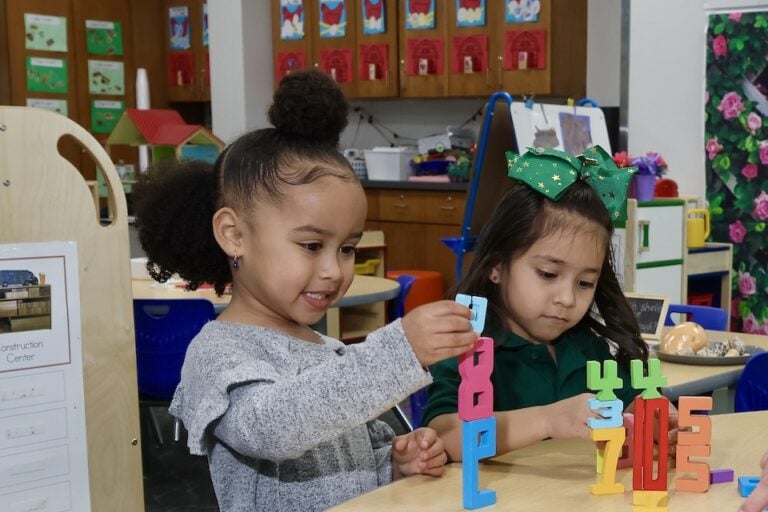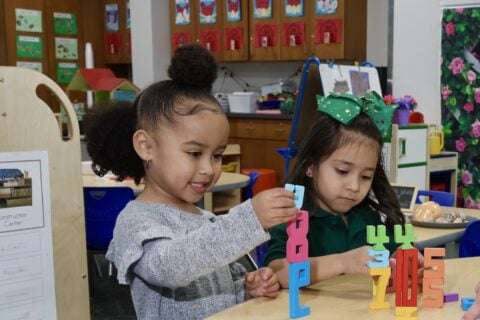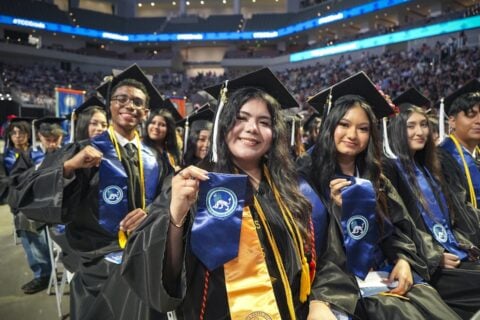Please note: The 2025–2026 Student Code of Conduct is currently under review and subject to updates. Finalized version will be posted soon.
Student Code of Conduct
- General Information
- Responsibilities
- Frequently Asked Questions
- Levels of Student Misbehaviors and Corrective Actions
- Assignments and Appeal Processes for DAEP Placements and Expulsions
- Student Dress Code
- Technology Regulation
- Volunteer Guidelines
- Assistance for Students with Learning Differences
- Extracurricular Activities
- Arlington ISD Departmental Supports
- Drug and Alcohol Counseling Options
- Attendance
- Threat Assessments
- School Safety Transfers
- Notices
- Definitions
General Information
AISD strives to provide a safe, positive, and educationally-oriented environment in each of its schools, and all students are expected to behave in a manner that supports this goal. Behaviors that disrupt the school and/or educational environment, violate the law, and/or present other health or safety risks will not be tolerated. The Student Code of Conduct is AISD’s notification of behaviors that are not tolerated. Possible corrective actions for each level of misbehavior are provided below, but each campus’s principal may consider other corrective actions as appropriate for each situation.
AISD strives to ensure that all of its students are free from bullying, cyberbullying and harassment, including violence in students’ relationships. All charges of bullying, cyberbullying, harassment, sexual harassment, and dating violence are to be taken very seriously by our students, faculty, staff, administration, and parents. We will make every effort to handle and respond to each and every charge and complaint filed by our students and employees in a fair, thorough, and just manner. Every effort will be made to protect the due process rights of all victims and all alleged offenders.
Some offenses are serious enough to warrant an automatic assignment to a disciplinary alternative educational placement campus (a Turning Point campus) or expulsion from AISD. Refer to the sections on Misconduct That Requires DAEP Placement and Misconduct That Requires Expulsion for further information.
Disciplinary Alternative Educational Placements (Turning Point placements) may be for 15 school days, 30 school days, 45 school days or 60 school days in most cases, and shall be determined based upon the factors listed in this code of conduct, AISD’s progressive discipline plan and the specific circumstances of each case.
For specific information regarding: (1) Personal Communication devices and other devices (cell phones, etc.); (2) use of technology and the Internet both on and off campus, and; (3) specific requirements regarding student dress code and uniforms, please review the Technology Regulations and Dress Code pages in this Code.
Transportation Procedures
Riding a school bus is a privilege and should be treated as such. Parents and students are responsible to arrive at the bus stop at least ten minutes before the route time to ensure student pick up. The bus driver will not wait for students to arrive at the stop, and will not stop if students are not present upon arrival. Students may be expected to wear or present their Student ID upon boarding the bus. Seat belts must be worn when available, and all food and class materials (class projects, musical instruments, etc.) must be stowed on the student’s lap or underneath the student’s seat. Students may only board or exit the bus at their assigned stop. Any changes in the daily routine of riding a bus must be requested through the campus administration and communicated in writing to the Transportation Department. Prior to a student riding a bus other than their own, the AISD Transportation Department must have a letter from the parent signed by the principal. Requests are considered based on eligibility and case by case basis. A student who is not eligible to ride a bus in AISD cannot ride under any circumstances. If a student misses the morning bus, they should return home immediately. If a student misses the afternoon bus, they should contact school personnel immediately. Parents are responsible for providing transportation if their child misses the bus.
Students must obey the bus driver’s instructions, which may include but are not limited to: (1) boarding and exiting procedures; (2) remaining seated at all times and facing forwards except for boarding and exiting the bus; (3) assigned seating; (4) minimizing noise and distractions, which includes loud conversations, throwing objects in or out of the bus, and keeping all body parts and materials inside the bus at all times; (5) maintaining clear aisle ways; (6) proper stowing of all food, approved beverage containers, and class materials or projects, and; (7) refraining from bringing prohibited items such as live animals, insects, combustibles, skateboards, or footballs/ basketballs/ tennis balls/ etc. on the bus. Behavior guidelines provided in the Code of Conduct remain in effect throughout the time students are in bus zones or riding the bus.
For students with disabilities, if transportation is a related service approved by the ARD (Admission, Review, Dismissal) committee, the principal may schedule an ARD committee meeting to discuss the infraction as related to transportation services.
Students with 504 Plans
The discipline of students who have active 504 Plans will include the consideration of the student’s Behavior Intervention Plan (BIP) when applicable.
Students with Disabilities
The discipline of students who have disabilities will include the consideration of the student’s Individualized Education Program (IEP). The discipline of students with disabilities is subject to applicable state and federal law in addition to the Student Code of Conduct. To the extent any conflict exists, state and/or federal law will prevail. In accordance with the Texas Education Code, a student who is enrolled in a special education program may not be disciplined in a manner that results in a change to the student’s educational placement for conduct meeting the definition of bullying, cyberbullying, harassment, or making hit lists (see Definitions) until a Manifestation Determination Review has been held to review the conduct. In deciding whether to order suspension, DAEP placement or expulsion, the district will take into consideration a disability that substantially impairs the student’s capacity to appreciate the wrongfulness of the student’s conduct. A behavior improvement or intervention plan that is included in a student's IEP must be reviewed at least once per year and at times more frequently to address changes in the child's circumstances or the safety of the student or others. More information regarding students with disabilities can be found with the Arlington ISD Special Education Department
Corrective actions for disciplinary infractions may vary due to a number of factors. Individual campuses strive for consistency and may apply specific corrective actions for various identified behaviors. Campus site-based decision making committees annually review school-specific discipline procedures and corrective actions, and may develop a range of corrective strategies to employ prior to a corrective action. However, when deciding whether to order suspension, removal to a disciplinary alternative education program, or expulsion, all campuses shall take into consideration:
- seriousness of the offense;
- student’s age;
- student’s grade level;
- ability and functioning level;
- frequency and level of prior misbehaviors/disciplinary history;
- student’s attitude, including but not limited to student’s level of truthfulness during initial investigation under the specific circumstances in each case;
- effect of the misconduct on the school environment;
- legal/statutory requirements;
- self-defense (see Definitions), and;
- intent or lack of intent at time student engaged in the misconduct.
District Behavior Supports (Positive Behavioral Interventions and Supports)
In an effort to fully implement School-Wide Positive Behavioral Interventions and Supports, along with maximizing students’ engagement and instructional time, each school in the Arlington Independent School District will utilize corrective strategies in Misbehavior Groups One and Two prior to referring a student to campus administration for an office discipline referral. These corrective strategies include but are not limited to:
- Remove distractions;
- Proximity control;
- Proactively prompt desired behavior;
- Increase opportunities for active participation;
- Increase use of specific praise statements;
- Increase wait time for response;
- Restorative language;
- Redirect student;
- Review/Re-Teach expectations, and;
- Provide opportunities for student to practice expected behaviors and provide descriptive feedback.
Restorative practices: A relational approach to building school climate and addressing student behavior that fosters belonging over exclusion, social engagement over control, and meaningful accountability over punishment.








